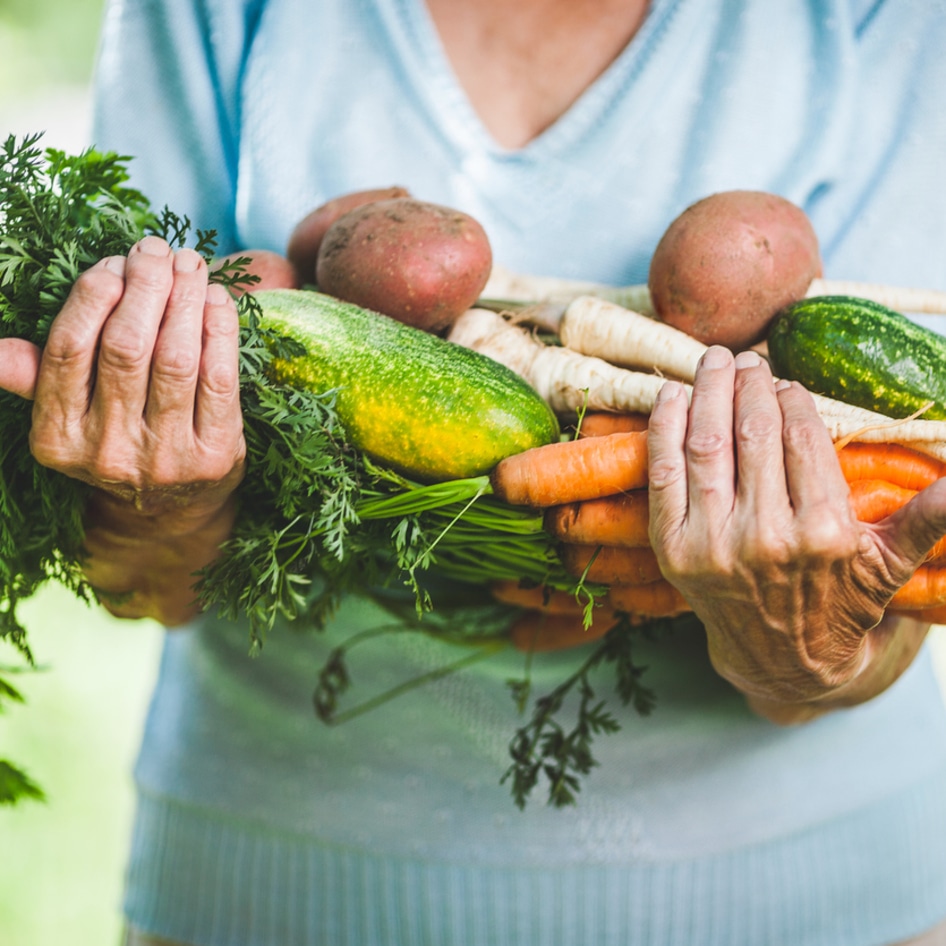Iron plays a crucial role in human health, forming red blood cells that transport oxygen, supporting organ function, and helping essential growth and development. Yet, iron deficiency anemia affects more than 1.2 billion people worldwide.
However, researchers at the John Innes Centre might have just landed on a solution to what the World Health Organization says is the world’s largest nutrient deficiency.
 Ksenia Makagonova/Unsplash
Ksenia Makagonova/Unsplash
Led by Professor Janneke Balk, researchers were able to identify genetic sequences responsible for high-iron mutations in plants such as peas and cereals. This discovery is a significant step towards addressing the global health issue of anemia through iron-fortified crops.
“There are a number of intriguing opportunities arising from this research but probably the most exciting outcome is that knowledge of these mutations could inform gene editing strategies to increase iron in a wide range of crops,” Balk said in a statement.
More iron in plants
Published in The Plant Journal, this research is crucial in combating iron deficiency anemia, a condition prevalent especially among girls and women worldwide, and exacerbated by reduced meat consumption due to climate change concerns. Iron deficiency anemia leads to a reduction in red blood cells, affecting oxygen storage and transport in the body.
The research team employed RNA sequencing to identify genes expressed in high-iron pea plants, comparing them with normal plants. Through computational mapping and plant experiments, they determined the exact mutations and their locations on the pea genome.
 Jonathan Farber/Unsplash
Jonathan Farber/Unsplash
The implications of this discovery extend beyond peas. “Now that we have identified these mutated genes, we can start making advances in both scientific understanding and practical improvements in producing food with higher more bioavailable iron content,” Balk said.
The knowledge gained from these high-iron phenotypes paves the way for biofortification or the enhancement of the nutritional value of food.
Potential applications include breeding pea shoots with tenfold more iron and developing natural iron supplements without the side effects of chemical alternatives. Moreover, the conserved nature of these genes across the plant kingdom hints at the possibility of biofortifying other crops like wheat and barley.
The identification of these mutations resolves a long-standing scientific mystery. The two high-iron pea varieties, key to understanding plant iron transport, had been a focus of research for more than 30 years. The first draft of the pea genome, completed four years ago, significantly aided this breakthrough.
“I have been associated with the field of iron homeostasis in plants for 20 years and every conference I went to, or in papers, these two genes are mentioned but people did not have the mutations,” Balk said.
“This was important to the success of our research because the seeds from one of the mutants loses viability after a couple of years,” she said. “It shows the key role of seed banks and maintaining historical collections.”
How to get enough iron from plants
The discovery of high-iron peas and cereals could reduce the reliance on iron supplements and offer a natural, more bioavailable form of iron. Researchers at John Innes Centre mentioned that their discovery is particularly relevant as dietary patterns shift globally, with a growing emphasis on plant-based diets and sustainability.
 Tina Dawson/Unsplash
Tina Dawson/Unsplash
However, contrary to popular belief, meat is not the only, nor best, source of iron, and a variety of plant foods can help keep iron levels in check—and without the health risks associated with consuming animal products.
Anna Herby, DHSc, RD, CDE, a Nutrition Education Specialist with the Physicians Committee for Responsible Medicine (PCRM), explains that the findings at John Innes Centre are indeed beneficial to certain populations.
“This discovery could be helpful for those with increased iron needs, like athletes, pregnant women, children, patients with GI conditions that reduce iron absorption, or patients who have had significant blood loss,” Herby tells VegNews.
“In these cases, more iron might be necessary due to either increased need, reduced ability to absorb iron or loss of iron through blood,” Herby says. “This discovery may reduce the need for supplementation in these cases if the high iron legumes and grains are readily available.
However, she also points out that individuals following a balanced plant-based diet typically get enough iron, indicating that special high-iron modifications might not be necessary for everyone.
 Vanessa Loring/Pexels
Vanessa Loring/Pexels
“In fact, studies show that individuals following a vegetarian diet have no higher rates of iron-deficiency anemia than those following an omnivorous diet in developed countries,” Herby says.
Some of the best sources of iron, according to Herby, are legumes such as lentils, soybeans, white beans, kidney beans, black beans, chickpeas, peas; nuts and seeds (think pumpkin seeds, tahini, sunflower seeds, hemp, and flax seed); and whole grains such as quinoa, brown rice, oats, and fortified cereals.
Dark leafy greens (such as collards and Swiss chard), along with broccoli, some dried fruit (apricots, figs, raisins, and prunes), and blackstrap molasses are also great sources of iron.
“Meat, especially red meat, contains iron, but is associated with chronic disease so is not an optimal source of dietary iron,” Herby says.
More generally, incorporating high-iron peas and cereals into one’s diet should be part of a balanced plant-based diet. “Avoiding dairy and eggs, which inhibit iron absorption, is recommended for optimal iron absorption,” Herby says. “It’s also a good idea to leave a few hours between consuming caffeinated beverages and chocolate and eating iron-rich foods since the phytates in coffee, tea, and cocoa can reduce absorption.”
Consuming vitamin C alongside iron is key to boosting absorption and would apply to the new high-iron peas and cereals researchers have identified. “A veggie stir fry or whole grain noodle dish with tomato sauce and peas would be great meals for incorporating these foods into your diet,” Herby says.
For the latest vegan news, read:
JUMP TO ... Latest News | Recipes | Guides | Health | Subscribe









